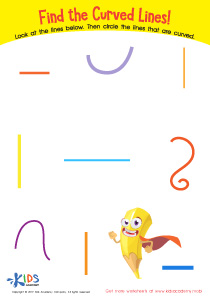Letter-sound correlation Alphabet Worksheets for Ages 4-5
6 filtered results
-
From - To
Discover our engaging Letter-Sound Correlation Alphabet Worksheets designed specifically for children aged 4-5! These interactive resources help young learners connect letters with their corresponding sounds, a crucial step in early literacy development. Each worksheet features eye-catching visuals and fun activities that promote a hands-on learning experience, making it easy and enjoyable for your little ones to grasp these foundational skills. Perfect for classroom use or homeschooling, our printable worksheets support phonemic awareness and boost confidence in reading. Start your child's educational journey with our comprehensive materials that foster a love for learning through play! Explore the letters and sounds today!


Beginning Sounds Assessment Printable


Letter A Sounds Worksheet


Letter Sounds: J Printable Worksheet


Letter U Sounds Worksheet


Letter T Sounds Worksheet


Matching Consonant Sounds: Part 1 Worksheet
Letter-sound correlation is fundamental for early literacy development in children aged 4-5. This correlation, which links specific letters with their corresponding sounds, forms the foundation of reading and writing skills. Parents and teachers should care about this crucial aspect of language acquisition for several reasons.
Firstly, mastery of letter-sound relationships enables children to decode words. When children recognize that the letter 'B' corresponds to the /b/ sound, they can begin to blend sounds to read simple words. This ability facilitates early reading confidence and comprehension.
Secondly, understanding letter-sound correlations aids in spelling development. As children learn to link sounds with letters, they are better equipped to phonetically spell words, strengthening their writing skills and reducing frustration.
Furthermore, a strong grasp of these correlations supports vocabulary expansion. As children read more, greater phonemic awareness allows them to tackle new words independently, enriching their language and literacy development.
Lastly, early literacy skills are closely tied to academic success in later years. By investing time and resources in teaching letter-sound correlations, parents and teachers can help foster a positive learning experience that lays the groundwork for lifelong reading and writing proficiency. Engaging with this aspect of literacy can transform children's educational journeys.

 Assign to My Students
Assign to My Students


















